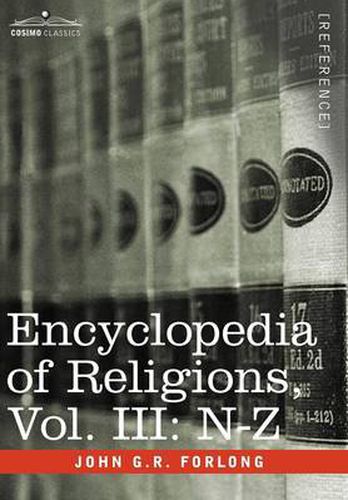Readings Newsletter
Become a Readings Member to make your shopping experience even easier.
Sign in or sign up for free!
You’re not far away from qualifying for FREE standard shipping within Australia
You’ve qualified for FREE standard shipping within Australia
The cart is loading…






This title is printed to order. This book may have been self-published. If so, we cannot guarantee the quality of the content. In the main most books will have gone through the editing process however some may not. We therefore suggest that you be aware of this before ordering this book. If in doubt check either the author or publisher’s details as we are unable to accept any returns unless they are faulty. Please contact us if you have any questions.
From a decree of Charlemagne in 789 A.C. we see that human sacrifices were still common in his barbarous empire. especially among pagan Saxons. They did not begin to die out till the 9th century. Unable to prevent the sacrifice of cattle at ancient shrines, Gregory I (600 A.C.) instructed his missionaries that these were to be offered up to God and to Christ, at the new churches which often were the old sacred circles… -from sacrifice This 1906 classic of comparative literature, hard to find in print today, was the first English-language project to approach the world’s religions from an anthropological perspective. The work of thirty years for Scottish author JAMES G. R. FORLONG (1824-1904), it was originally published under the now-antiquated title A Cyclopedia of Religions and produced at the author’s own expense, so strongly did he feel about the need for it despite the reluctance of the publishing houses of the day to produce it. A road engineer by trade, Forlong traveled the world, learning seven languages and becoming an avid amateur student of native culture-his labor of love was gathering, in this three-volume set, a comprehensive, academic knowledge of the totality of human religious belief. Volume III: N-Z includes entries on such gods, peoples, places, practices, symbols, and concepts as: - Na'aman, naga, oaths, and Odin - pagoda, Pantheism, and Quakers - Ra, runes, Shin-to, and Sophists - talisman, Tertullian, unicorn, and Upanishads - vana, wells, Yggdrasil, and Zeus - and much more.
$9.00 standard shipping within Australia
FREE standard shipping within Australia for orders over $100.00
Express & International shipping calculated at checkout
This title is printed to order. This book may have been self-published. If so, we cannot guarantee the quality of the content. In the main most books will have gone through the editing process however some may not. We therefore suggest that you be aware of this before ordering this book. If in doubt check either the author or publisher’s details as we are unable to accept any returns unless they are faulty. Please contact us if you have any questions.
From a decree of Charlemagne in 789 A.C. we see that human sacrifices were still common in his barbarous empire. especially among pagan Saxons. They did not begin to die out till the 9th century. Unable to prevent the sacrifice of cattle at ancient shrines, Gregory I (600 A.C.) instructed his missionaries that these were to be offered up to God and to Christ, at the new churches which often were the old sacred circles… -from sacrifice This 1906 classic of comparative literature, hard to find in print today, was the first English-language project to approach the world’s religions from an anthropological perspective. The work of thirty years for Scottish author JAMES G. R. FORLONG (1824-1904), it was originally published under the now-antiquated title A Cyclopedia of Religions and produced at the author’s own expense, so strongly did he feel about the need for it despite the reluctance of the publishing houses of the day to produce it. A road engineer by trade, Forlong traveled the world, learning seven languages and becoming an avid amateur student of native culture-his labor of love was gathering, in this three-volume set, a comprehensive, academic knowledge of the totality of human religious belief. Volume III: N-Z includes entries on such gods, peoples, places, practices, symbols, and concepts as: - Na'aman, naga, oaths, and Odin - pagoda, Pantheism, and Quakers - Ra, runes, Shin-to, and Sophists - talisman, Tertullian, unicorn, and Upanishads - vana, wells, Yggdrasil, and Zeus - and much more.